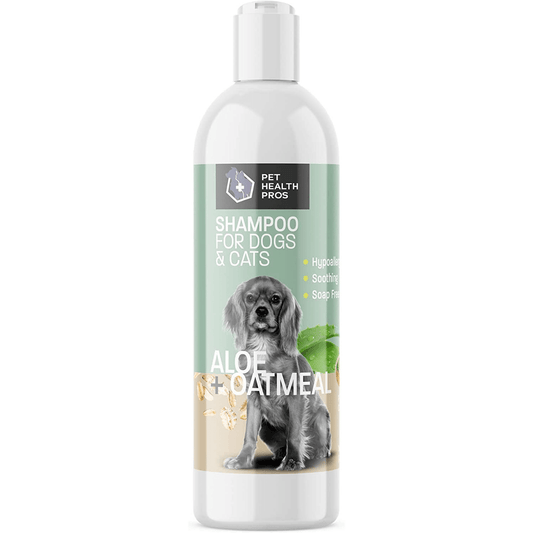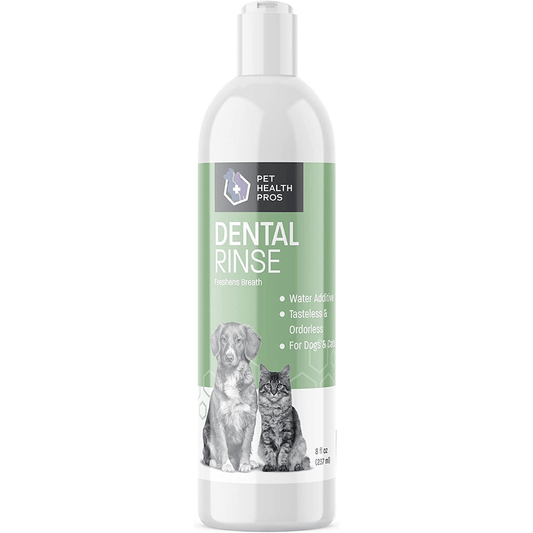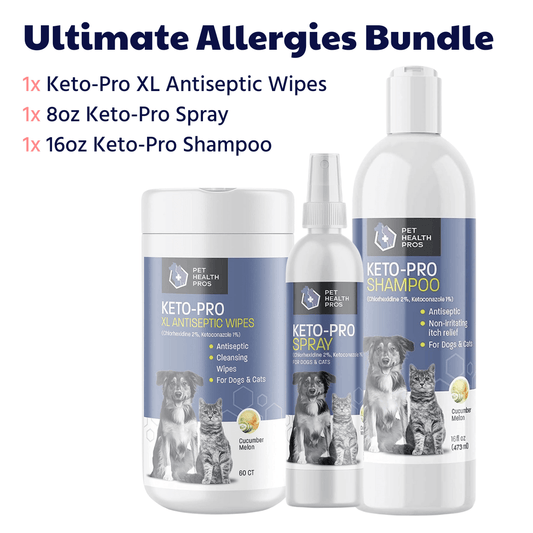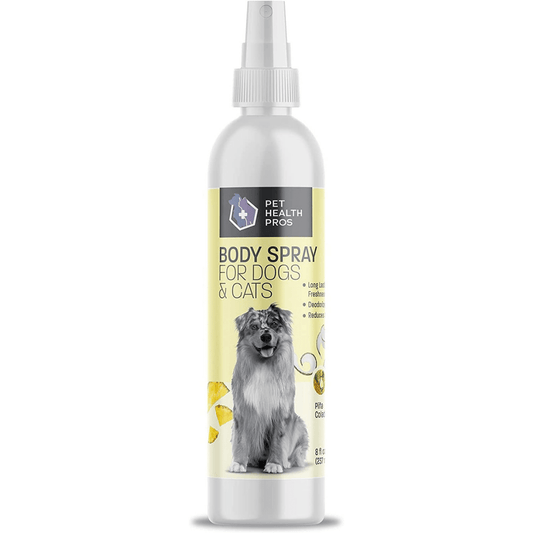Antiseptic flushes are essential tools for maintaining your dog’s skin health, particularly when dealing with wounds, infections, or irritations. In this comprehensive guide, we delve into the benefits and proper usage of antiseptic flushes for dogs, ensuring you have the knowledge to keep your furry friend healthy and comfortable.
Key Takeaways
- Antiseptic flushes help promote healing and prevent infections in dogs.
- Proper usage involves following a step-by-step guide and taking necessary precautions.
- Choosing the right antiseptic flush requires consideration of ingredients and veterinary recommendations.
- Be aware of potential side effects and know when to consult a veterinarian.
- Maintaining your dog’s overall skin health involves regular grooming, a balanced diet, and monitoring for skin issues.
Understanding Antiseptic Flush for Dogs
What is an Antiseptic Flush?
An antiseptic flush is a specially formulated solution used to clean and disinfect wounds, cuts, and abrasions on a dog's skin. It helps to remove debris and bacteria, reducing the risk of infection and promoting faster healing. These solutions are often recommended by veterinarians and are a staple in pet health supplies.
How Does It Work?
Antiseptic flushes work by using active ingredients that kill or inhibit the growth of microorganisms. When applied to a wound, the solution cleanses the area, removing dirt and pathogens. This process not only prevents infections but also creates an optimal environment for the skin to heal. The effectiveness of an antiseptic flush can be attributed to its ability to maintain a clean wound surface.
Common Ingredients Used
The most common ingredients found in antiseptic flushes include chlorhexidine, povidone-iodine, and hydrogen peroxide. Each of these ingredients has unique properties that make them effective at disinfecting wounds. For instance:
- Chlorhexidine: Known for its broad-spectrum antimicrobial activity.
- Povidone-iodine: Effective against a wide range of pathogens.
- Hydrogen peroxide: Helps in mechanical removal of debris and has mild antiseptic properties.
Using an antiseptic flush is a proactive step in ensuring your dog's wounds heal properly and without complications. Always consult with your veterinarian to choose the most suitable product for your pet's needs.
Benefits of Using Antiseptic Flush for Dogs
Promotes Healing
Antiseptic flushes are designed to promote healing in dogs by cleaning wounds and preventing infections. This ensures that the affected area remains free from harmful bacteria, allowing the natural healing process to occur more efficiently. By keeping the wound clean, the antiseptic flush helps to reduce the risk of complications and supports faster recovery.
Prevents Infections
One of the primary benefits of using an antiseptic flush is its ability to prevent infections. The solution works by eliminating bacteria and other pathogens that can cause infections in open wounds or irritated skin. Regular use of an antiseptic flush can significantly reduce the likelihood of infections, ensuring your dog stays healthy and comfortable.
Reduces Discomfort
Using an antiseptic flush can also help to reduce discomfort for your dog. Irritated or infected wounds can cause significant pain and discomfort. By cleaning the area and preventing infections, the antiseptic flush helps to alleviate these symptoms, making your dog feel more at ease. This is particularly important for dogs with sensitive skin or those prone to skin issues.
For optimal results, it's essential to follow the recommended usage guidelines and consult with your veterinarian if you have any concerns about your dog's skin health.
How to Properly Use Antiseptic Flush on Your Dog
Using an antiseptic flush on your dog can be a straightforward process if done correctly. Proper application ensures that your dog receives the maximum benefit from the treatment while minimizing any potential risks.
Step-by-Step Guide
- Prepare the Area: Ensure the area around the wound is clean. You may need to trim any fur that could get in the way.
- Dilute the Solution: If the antiseptic flush is concentrated, dilute it according to the instructions. For example, you might need to dilute betadine (povidine iodine) or nolvasan (chlorhexidine) in warm water.
- Apply the Flush: Gently apply the solution to the affected area. You can use a clean cloth or a syringe to ensure even distribution.
- Let It Sit: Allow the solution to sit for a few minutes to maximize its effectiveness.
- Rinse and Dry: If required, rinse the area with clean water and pat it dry with a clean towel.
Precautions to Take
- Avoid Contact with Eyes: Ensure the solution does not come into contact with your dog's eyes.
- Monitor for Allergic Reactions: Watch for any signs of adverse reactions, such as redness or swelling.
- Consult Your Vet: If you're unsure about the process or if the wound looks severe, consult your veterinarian for advice.
Frequency of Use
The frequency of using an antiseptic flush depends on the severity of the wound and the type of antiseptic used. Generally, it can be applied once or twice daily until the wound shows signs of healing. Always follow the instructions provided by your veterinarian or the product label.
Consistent and proper use of antiseptic flush can significantly aid in your dog's recovery process, ensuring a quicker return to their happy, healthy self.
Choosing the Right Antiseptic Flush for Your Dog
Factors to Consider
When selecting an antiseptic flush for your dog, it's essential to consider several factors to ensure you choose the best product for your pet's needs. Look for products that are specifically formulated for dogs and avoid those with harsh chemicals that could irritate your dog's skin. Additionally, consider the type of infection or wound you are treating, as some antiseptic flushes are designed for specific conditions.
Veterinarian Recommendations
Consulting with your veterinarian is crucial when choosing an antiseptic flush. Veterinarians can provide personalized recommendations based on your dog's health history and specific needs. They can also advise on the appropriate usage and potential side effects of different products.
Reading Labels and Ingredients
Carefully reading the labels and ingredients of antiseptic flush products is vital. Look for active ingredients such as chlorhexidine or povidone-iodine, which are effective in killing bacteria and promoting healing. Avoid products with alcohol or other harsh substances that can cause discomfort or further irritation to your dog's skin.
Choosing the right antiseptic flush can significantly impact your dog's recovery and overall skin health. Always prioritize products that are safe, effective, and recommended by professionals.
Potential Side Effects and How to Handle Them
Recognizing Adverse Reactions
When using an antiseptic flush on your dog, it's crucial to monitor for any adverse reactions. Common side effects may include redness, swelling, or itching at the application site. In rare cases, your dog might experience more severe reactions such as difficulty breathing or hives. Always observe your dog closely after applying the flush to catch any signs of discomfort early.
Immediate Steps to Take
If you notice any adverse reactions, take immediate action to ensure your dog's safety:
- Stop using the antiseptic flush immediately.
- Rinse the affected area with clean water to remove any remaining product.
- Monitor your dog's condition closely for any changes.
- Contact your veterinarian for further advice and possible treatment options.
When to Consult a Veterinarian
Consult your veterinarian if your dog shows persistent or severe symptoms after using an antiseptic flush. Veterinarian recommendations are essential for determining whether the product is suitable for your dog's specific needs. Additionally, if your dog has a history of allergic reactions or sensitive skin, it's best to seek professional advice before using any new product.
Ensuring your dog's safety and comfort is paramount when using any health product. Always consult your vet to achieve the best results and enhance your dog's health with chlorhexidine wipes: antiseptic cleaning for skin, ears, paws. Reduces infections, safe for dogs.
Frequently Asked Questions About Antiseptic Flush for Dogs
Can It Be Used on All Breeds?
Yes, antiseptic flushes are generally safe for all dog breeds. However, it's always best to consult with your veterinarian before using any new product on your pet, especially if your dog has sensitive skin or any pre-existing conditions.
Is It Safe for Puppies?
Antiseptic flushes can be used on puppies, but it's crucial to choose a product specifically formulated for younger dogs. Always read the label and follow the manufacturer's guidelines to ensure the safety of your puppy.
What to Do If Your Dog Licks the Area?
If your dog licks the treated area, it may reduce the effectiveness of the antiseptic flush. To prevent this, consider using an Elizabethan collar (E-collar) or distracting your dog with a toy or treat until the area dries. If you notice any adverse reactions, consult your veterinarian immediately.
For optimal dog wound care, always follow the instructions provided by your veterinarian and the product manufacturer.
Expert Tips for Maintaining Your Dog’s Skin Health
Regular Grooming Practices
Regular brushing of your dog's coat between groomings helps spread their natural oils, keeping more of their skin and coat moisturized. It also helps remove dirt and loose fur, reducing the risk of skin irritations. Consistent grooming can prevent matting and tangles, which can cause discomfort and skin issues.
Diet and Nutrition
A balanced diet rich in essential fatty acids, vitamins, and minerals is crucial for maintaining your dog's skin health. Omega-3 and Omega-6 fatty acids, found in fish oil and flaxseed, can help reduce inflammation and promote a healthy coat. Ensure your dog's diet includes high-quality proteins and is free from allergens that might cause skin reactions.
Monitoring for Skin Issues
Regularly check your dog's skin for signs of redness, bumps, or unusual spots. Early detection of skin problems can prevent more serious health issues. If you notice any persistent issues, consult your veterinarian for advice. Being proactive about your dog's skin health can save you from more significant problems down the line.
Maintaining your dog's skin health is not just about appearance; it's about ensuring their overall well-being and comfort. Regular grooming, a nutritious diet, and vigilant monitoring are key to keeping your dog's skin in top condition.
Maintaining your dog's skin health is crucial for their overall well-being. Our expert tips can help you keep your furry friend’s skin in top condition. For more detailed advice and to explore our range of specialized pet care products, visit our website today.
Conclusion
In summary, antiseptic flushes are an invaluable tool in maintaining your dog's health and well-being. By incorporating these solutions into your pet care routine, you can effectively prevent infections, promote faster healing, and ensure a cleaner, healthier environment for your furry friend. Pet Health Pros, with over fifty years of combined experience in Veterinary Medicine and Animal Health Management, offers expertly crafted antiseptic flushes made from top-grade, locally sourced ingredients. Our commitment to quality and customer satisfaction ensures that you are providing the best care possible for your pet. Trust Pet Health Pros for all your pet health needs and experience the difference that expert care can make.
Frequently Asked Questions About Antiseptic Flush for Dogs
Can It Be Used on All Breeds?
Yes, antiseptic flushes are generally safe for all dog breeds. However, it's always best to consult with your veterinarian before using any new product on your pet.
Is It Safe for Puppies?
Antiseptic flushes can be safe for puppies, but it's crucial to use a product specifically formulated for younger dogs. Always read the label and consult your veterinarian to ensure safety.
What to Do If Your Dog Licks the Area?
If your dog licks the area where the antiseptic flush was applied, monitor them for any signs of adverse reactions. If you notice any unusual behavior or symptoms, contact your veterinarian immediately.
How Often Should I Use Antiseptic Flush on My Dog?
The frequency of use depends on the specific condition being treated and the product instructions. Generally, it's recommended to follow your veterinarian's advice and the guidelines provided on the product label.
Can Antiseptic Flush Be Used for Other Pets?
Antiseptic flushes are formulated specifically for dogs, but some products may be suitable for other pets like cats. Always check the label and consult your veterinarian before using the product on other animals.
What Ingredients Should I Look for in an Antiseptic Flush?
Common ingredients in antiseptic flushes include chlorhexidine, ketoconazole, and acetic acid. These ingredients help kill bacteria, fungi, and viruses, promoting healing and preventing infections.









